The Ear
Why it is Essential that Competent
Inspection is carried out
Clinical examination of the ear is essential.
Correct procedure, known as otoscopy is essential to make sure we diagnose what is going on in the ear canal.
The ear canal can tell us so many things regarding the health of patients. Here we will share with you best practices and some of the things we look for.

Impacted Ear Wax is the most common Ear Disorder
Keep in mind that out of the 1000’s of ears we look down at Lanarkshire Hearing Centre, the most common ear disorder is impacted ear wax. If we find any of the problems listed below, we will automatically refer you to your GP. If you are uncertain, we will always be willing to give you a full clinical otoscopy and ear health check.
Your ear drum is essentially a window into your middle ear and inspection can provide a trained professional with valuable information. The appearance and behaviour of the ear drum or, to give it the proper name Tympanic Membrane, can provide valuable information about your ear health or whether you have a disease of the middle ear.

How we Conduct an Otoscopic examination of the Ear @ Lanarkshire Hearing Centre using the British Society of Audiology guidelines:
- First of all we inspect the Pinna which is the bit you would recognise as the part stuck to the side of your head. This is responsible for sound collection and points forward to help you hear predominantly from the front. We inspect this for soreness or tenderness, or perhaps previous surgery carried out to the ear.
- Inspect the entrance to the Ear canal. We are looking for debris, pus or ear wax and whether or not this will restrict our examination of the full ear canal and the ear drum.
- We will now inspect the ear canal by lifting your Pina up and back to straighten your ear as much as possible. Your ear canal has an S shaped bend to protect your ear from insertion of a foreign object. You may have experienced rough insertion before which causes pain. There is a gentle way of inspecting the ear and we always practice the gentle way! We will also make sure we stabilise the head to protect you in case of movement.
- While inspecting your ear canal we will also thoroughly inspect the ear drum and look for a normal healthy eardrum which should be grey and opaque. We will communicate with you at all times as the further we go the more sensitive the procedure can be.
Common Ear Pathologies
Observed with Otoscopy and the Tympanic Membrane (Ear Drum)
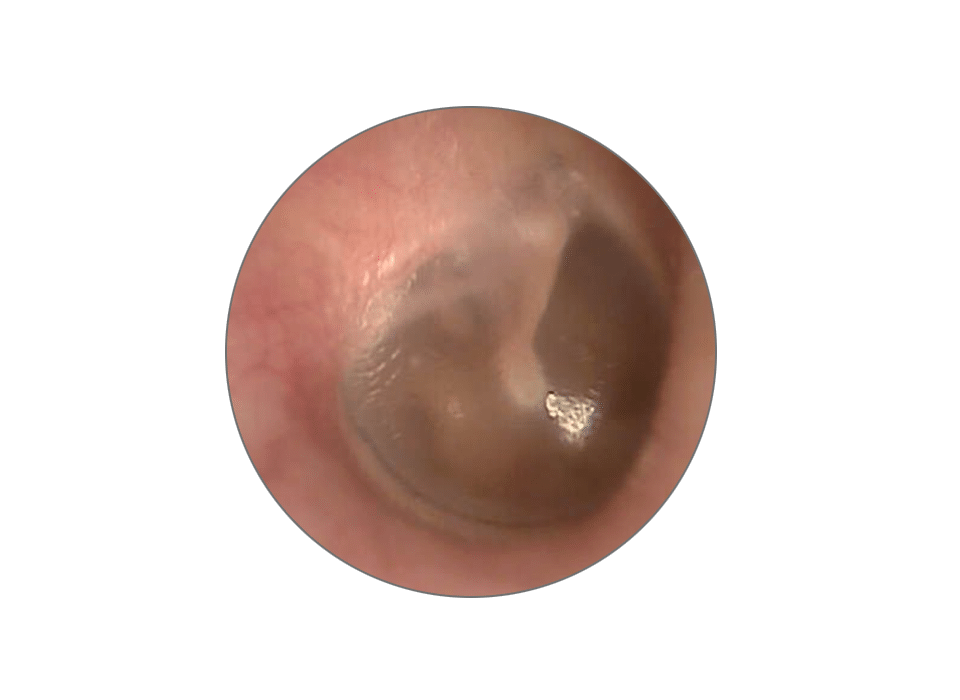
Normal Ear Drum
A normal Ear drum is a Grey and opaque colour. It has slight transparency which allows us to see some of the middle ear. The main part of the middle ear we can observe during Otoscopy is a bone known as the Malleus or if you were a student of biology you may know it as the hammer.
What we are looking for with a healthy Ear Drum is the malleus bone which pulls the ear drum back slightly so it is concave. We know it is doing this because it gives off a certain light reflection known as the light reflex.
Sometimes the ear is transparent enough to provide us with a view of all the middle ear bones. There is 3 in total and they are known as the malleus, Incus and Stapes or he Hammer the Anvil and the Stirrup.
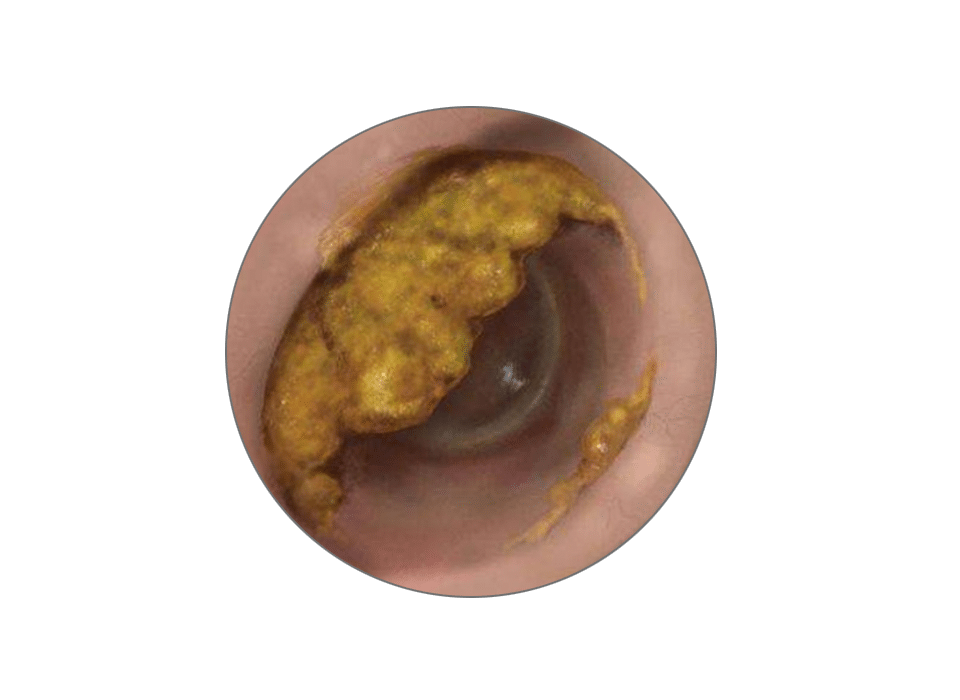
Impacted Ear Wax
The most common observation in our hearing clinic outside of a normal ear drum is an ear that has impacted ear wax. Ear wax is perfectly healthy in the ear and is there to protect your ear from dirt and infection.
This problem can be easily solved @ Lanarkshire Hearing Centre.
We have a dedicated custom-built ear wax removal room.
We use Ear Wax Removal by Microsuction to remove the wax.
Ear Wax
Service
We offer earwax removal at all of our clinics. Make an appointment at a time convenient to you.
Ear Wax
Treatments
Microsuction is by far the safest form of ear wax removal. Same day bookings are available.
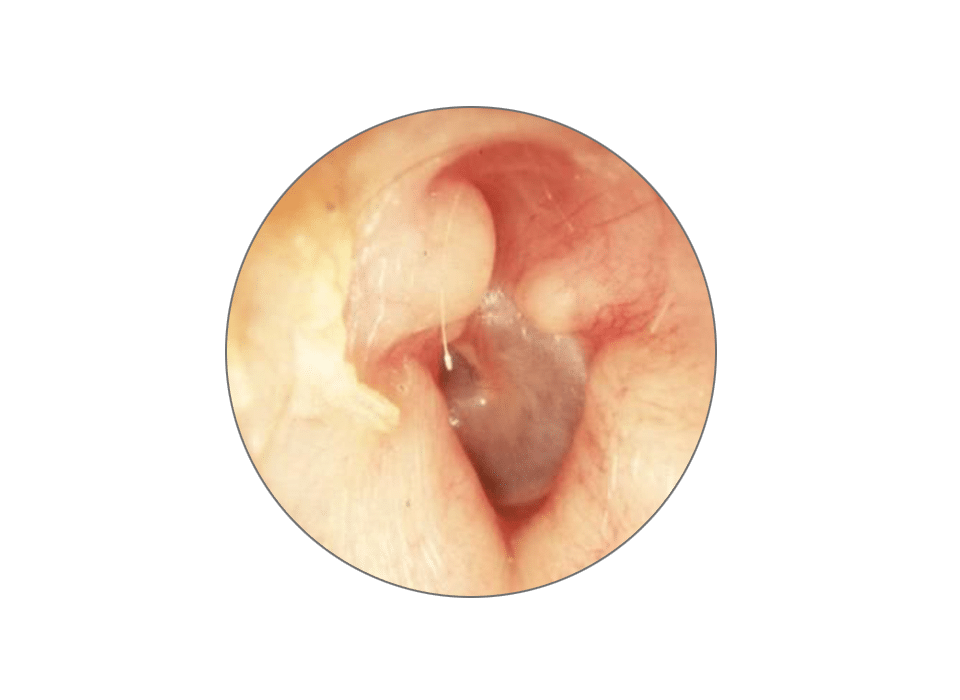
Exostosis
Exostosis are benign growths in the ear canal.
They are cartilaginous tissue that grows on the bony part of the ear canal. They are often multiple and generally happen bilaterally (in both ears).
They normally have no symptoms and are found in people who expose themselves to cold water regularly. They very rarely grow large enough to block the ear canal.
If you swim a lot in cold water, we would recommend you use custom built swim plugs.
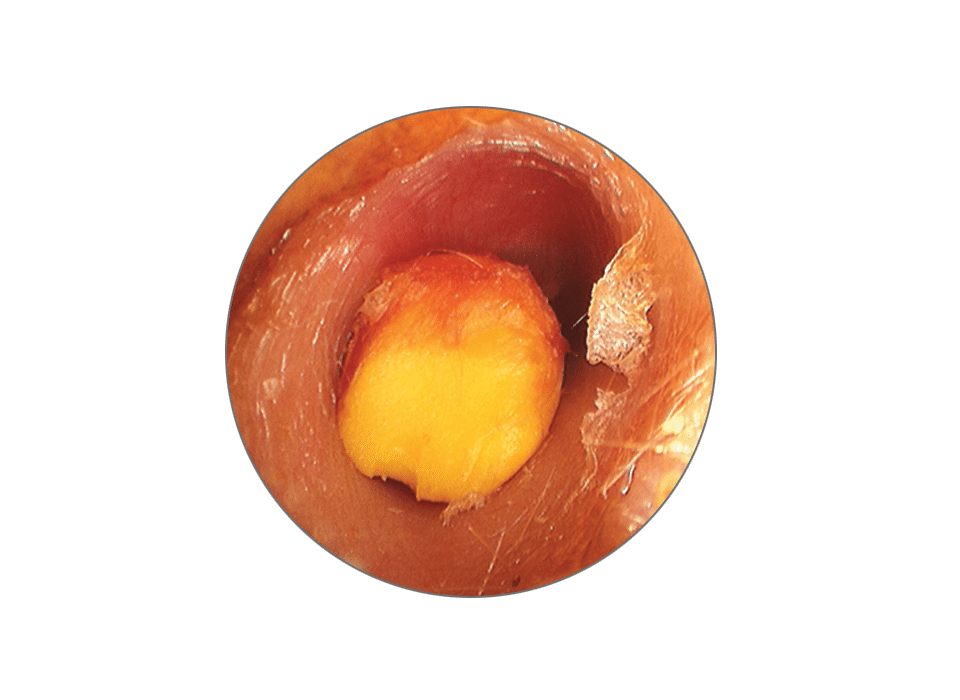
Foreign Bodies in the Ear Canal
There can be a wide range of common foreign bodies in the ear. A regular one we see at Lanarkshire Hearing Centre is the cotton part of a cotton bud stuck in the ear.
Please read here on why you should not use cotton buds. We have also pulled out a few bugs and sometimes little parts of broken hearing aids.
It is essential to have foreign bodies removed by an expert. Foreign bodies tend to sit deep in the ear canal and cause pain.
Trying to remove them yourself can result in damage to the ear canal or ear drum.

Otomycosis
Otomycosis shows itself as a white or cream coloured debris which can look slightly fluffy or have the presence of mycelia which is a form of fungal infection.
If we spot this in your ear canal, we will refer you onto your GP for further treatment.

Acute Otitis Externa
Mainly caused by trauma in the ear canal or excessive moisture. For example, if you continually rub your ears dry with ear buds.
The skin of the ear canal becomes sore to touch, will swell up and will become infected. Often with Acute Otitis Media there is skin debris which need to be removed for effective treatment.
If we spot this during ear examination, we will refer you to your GP.

Acute Otitis Media
More common in children, Acute Otitis Media is when the area behind the ear drum becomes inflamed and infected. It’s more common in Children because their middle ear cavity and Eustachian tubes are not formed correctly meaning they cant drain the mucus effectively which results in pain and sometimes infection.
Adults can experience it with changes in altitude, changes in climate or having experienced recent colds, flu, sinus or ear infection.
This can be a painful type of ear infection. This is a middle ear problem and can be painful because the middle ear becomes very inflamed and carries infection. In children this is generally accompanied with real pain and lots of crying whilst holding their ear. What we are looking for is redness or swelling on the ear drum or perhaps some fluid and bubbles in the middle ear. If we spot this, we will carry out audiometry and write a referral letter to your GP for further investigation.
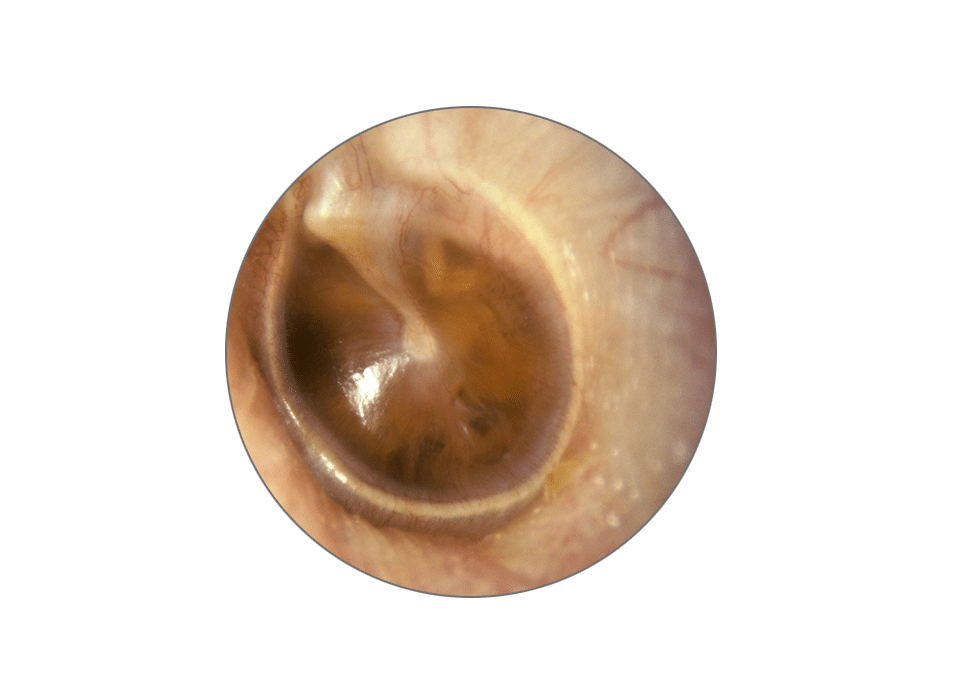
Serous Otitis Media
Also known as Otitis Media with effusion, is an ear condition which involves fluid inside the middle ear.
Again, more likely in children because of their underdeveloped eustachian tubes.

Central Ear Drum Perforation or Perforated Ear Drum
Generally very easy to see, this is a hole in the middle of the Tympanic Membrane in an area called the pars flacida.
It can generally occur after repeated ear infections although if you use cotton buds and get it wrong you can also cause a central perforation of the ear drum.

Tympanosclerosis
Found in patients who generally have had severe or continued ear infections. Effectively this is where the eardrum has repaired itself but left a calcified tissue between the 3 layers of your ear drum.
Traumatic Ear Drum perforation
This is something you may recognise if you watch sports like boxing. Generally this happens when there is a sudden and rapid change in pressure such as a blow to the ear or if you are exposed to a very loud bang.
Also, if you place things down your ear like cotton buds and Kirby grips you will very likely put yourself in danger of a traumatic ear drum perforation.
